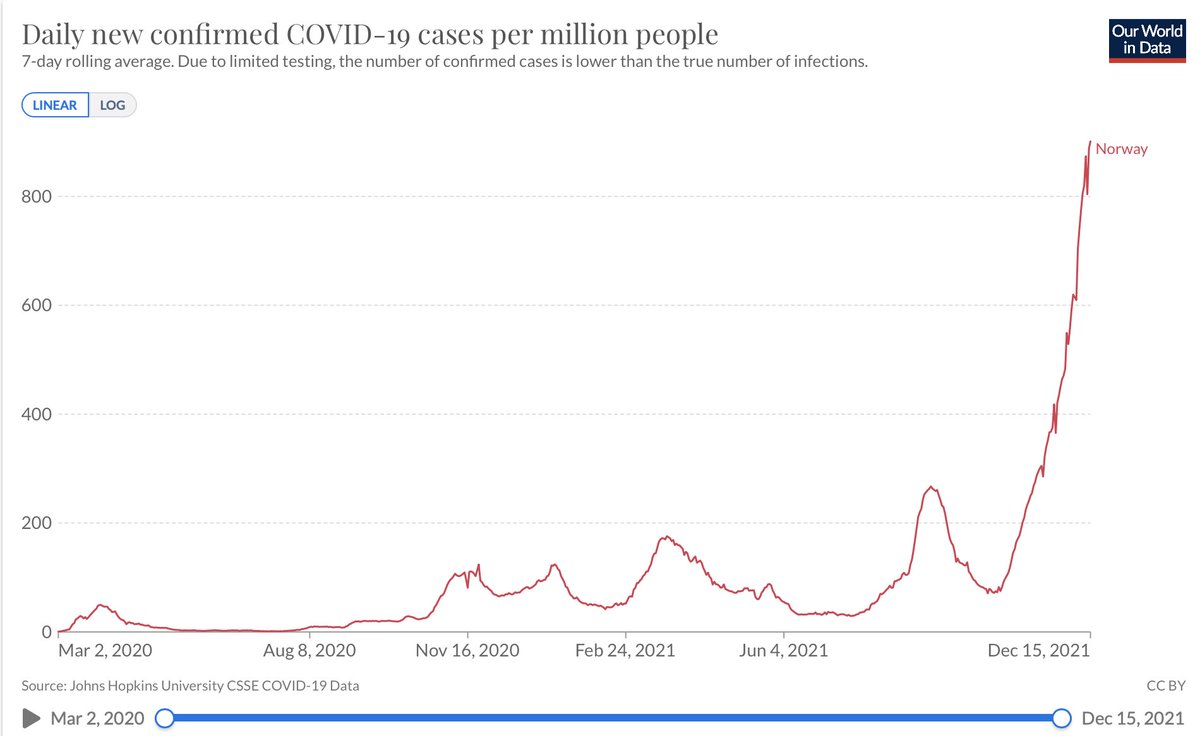
Interesting early data on #omicron severity in this preprint from SAfrica.
Main take-away for me still:
Population with high protection from severe disease but low protection from infection means more infections with mild symptoms.
Inherently milder? 🤷♂️
medrxiv.org/content/10.110…
Main take-away for me still:
Population with high protection from severe disease but low protection from infection means more infections with mild symptoms.
Inherently milder? 🤷♂️
medrxiv.org/content/10.110…
The authors compared SGTF cases with non-SGTF cases during the same time period (1/10 - 30/11).
Remember: SGTF is S gene target failure, the signal in certain PCR tests that is currently used as an (imperfect) proxy for omicron infections.
Remember: SGTF is S gene target failure, the signal in certain PCR tests that is currently used as an (imperfect) proxy for omicron infections.
The authors found that the risk of these likely #omicron cases to end up in hospital was only about one fifth the risk (10-30%) of cases without SGTF (likely not omicron)
But once patients were in hospital, their risk of severe disease was about the same.
But once patients were in hospital, their risk of severe disease was about the same.
Interestingly, the authors also compared risk of SGTF cases now with risk of Delta cases in the previous wave (April to November).
Here they found something else:
Hospitalized #omicron cases had about 30% (20-50%) the risk of hospitalized Delta cases of severe disease.
Here they found something else:
Hospitalized #omicron cases had about 30% (20-50%) the risk of hospitalized Delta cases of severe disease.
Why the difference:
Most likely explanation would seem that population immunity post-Delta has lowered risk of severe disease over all. So hospital outcomes are better now for all infections whether #omicron or not.
Most likely explanation would seem that population immunity post-Delta has lowered risk of severe disease over all. So hospital outcomes are better now for all infections whether #omicron or not.
And why fewer hospitalizations with #omicron?
Omicron‘s immune evasion means more infections in vaxxed/recovered and those are more likely to be mild
Of course, omicron could also be inherently milder. It‘s just too early to tell with any certainty.
Omicron‘s immune evasion means more infections in vaxxed/recovered and those are more likely to be mild
Of course, omicron could also be inherently milder. It‘s just too early to tell with any certainty.
This is what the authors write:
„It is difficult to disentangle the relative contribution of high levels of previous population immunity versus intrinsic lower virulence to the observed lower disease severity.“
„It is difficult to disentangle the relative contribution of high levels of previous population immunity versus intrinsic lower virulence to the observed lower disease severity.“
The difference when comparing cases in same time period vs. comparing with earlier wave „suggests that this reduced severity may be in part a result of high levels of population immunity (due to natural infection and/or vaccination)“
Remember that this is still early data with lots of limitations and caveats.
More data to come from UK soon, so picture will become clearer over time…
More data to come from UK soon, so picture will become clearer over time…
• • •
Missing some Tweet in this thread? You can try to
force a refresh







